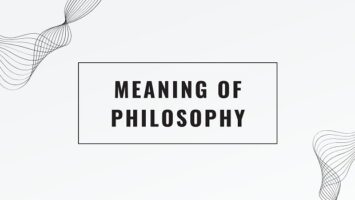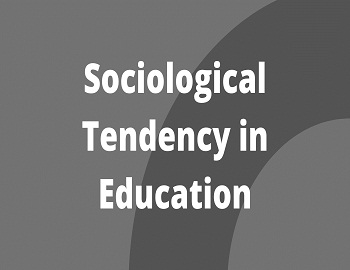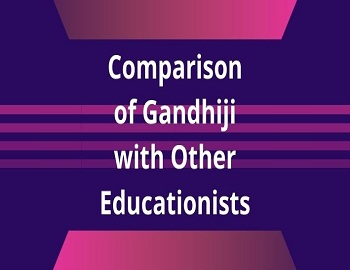Table of Contents
Evans-Pritchard Approach to Religion:
The early works on religious and magical phenomena, especially those of Tylor and Frazer, offer explanations of religion in terms of origins. It is, of course, quite unrealistic to try to find the origin of some custom or belief in the absence of historical evidence. All the same, we continue to read the books of Tylor, Frazer, and Durkheim as classics.
Considerable advance is made in this field by Evans-Pritchard who explains religious facts in terms of ‘the totality of the culture and society, in which they are found’.
For example, he argues that “To try to understand magic as an idea in itself, what is the essence of it, as it were, is a hopeless task.” He holds that it would be more intelligible when magic is examined in relation to people’s activities and also in terms of their other beliefs
Evans-Pritchard had already charted out his approach to religion in three early essays, the intellectualism (English) interpretation of magic(1933), Levy-Brhul’s theory of Primitive Mentality (1934), and Science and Sentiment: an exposition and criticism of the writings of Pareto (1936). He incorporated these articles in his Theories of Primitive Religion (1965). He held that everyday knowledge should be compared with everyday knowledge, technology with technology, and theology with theology. In this, he followed Durkheim’s methodological rule that social phenomena must be explained in terms of other social phenomena.
In his approach to religion, Evans-Pritchard adopted the task of planning beliefs as sociological facts. For this task, he determined that the proper method was comparative. According to Evans-Pritchard, comparative religion must be comparative in a relational manner, that is, we should see whether a common element of more than one religion being compared is related to any other social facts. As an example, he cited Weber’s work in relating certain Protestant teachings to certain economic changes.
Two of Evans-Pritchard’s monographs, Witchcraft, Oracles, and Magic among the Azande (1937) and Nuer Religion (1956), exemplify his approach to religion, both comparative and structural. As for historical scope, both works are based on his fieldwork in the 1930s. The first book is an attempt to make understandable a number of beliefs, all of which are foreign to the mentality of a European. He shows how they form a complete system of thought and how this system of thought is related to social activities, social structure, and the life of the individual. In the second book, Nuer’s reflections on God, sin, sacrifice, spirit, and symbolism are collected together for analyzing the meaning and significance of primitive beliefs and symbols.
The Azande Monograph:
Like Levy-Bruhl, Evans Pritchard believed that all systems of belief could be explained rationally. With regard to the Azande, he asked such a question how can a people live with irrational beliefs and false premises without discovering that they are false? In brief, the Azande believe that witches are always evil and any misfortune can be attributed to witchcraft which is a psychic activity. The witch, motivated by feelings of envy, causes damage to others. The victims place the names of possible witches before their various oracles who tell them which of the suspects are innocent and which may be guilty. The guilty are requested to withdraw her evil influence. If the witch does not do so and the victim dies, the kins persons employ vengeance magic to destroy the witch. Witchcraft, oracle, and magic thus form a complex system of beliefs and rites that make sense only when they are seen as interdependent parts of the whole system of belief. According to Evans-Pritchard, in sociological terms, these beliefs are mystical because they are distinct from an empirical mode of belief and action.
Evans-Pritchard had the advantage over Tylor, Frazer, Levy-Brhul, and even Durkheim (who all were armchair theoreticians) in, that he did empirical research.
His focus was on understanding Azande’s beliefs as a system of ideas. Here, you can clearly see Levy-Bruhl’s influence on his approach to religion. Also, Evans-Pritchard tried to correct Levy-Brhul.
Evans-Pritchard wrote the Azande book, especially with Levy-Bruhl in mind. According to Levy-Bruhl, primitive people view the world in terms of mystical influences and give little scope to natural principles. He also held that primitives are comparatively simple in their thinking, having little tendency to think about the evidence for their ideas. Evans-Pritchard thought that Levy-Brhul presented an incorrect image of primitive beliefs and in his book on the Azande, he attempted to correct the latter’s mistakes.
Evans-Pritchard argued that primitive systems of thought are not as thoroughly controlled by mystical elements as Levy-Brhul believed. Evans-Pritchard described what he called the dual causality in Azande beliefs, by which he meant that Azande thought contained both mystical and natural causation.
He cites the case in which a group of people was sitting beneath a granary that had been weakened by termites. When the granary collapsed causing injury, witchcraft was blamed. The Azande were aware that the natural cause of the granary’s collapse was the action of the termites, but to them, this only explained how, and not why, the structure fell. Their question was: why was it this granary which collapsed, and why did it do so precisely when these persons were beneath it? As mentioned before, Evans-Pritchard shows that Azande witchcraft beliefs constitute a logically tight and wholistic system.
In addition to explaining what seemed like irrational beliefs of primitive people, the Azande book also employs structural analysis to build a model of abstraction. The structural approach involves not only the understanding of a particular social system but also the analysis of the principles through which the human mind operates. The decoding of abstraction from social life includes the principles of opposition, complementarity, and analogy.
As Kuper (1983) points out, at the heart of the Azande book is an opposition between mystical and empirical beliefs and activities. Evans-Pritchard showed that the Azande do not make this contrast and that they believe mystical forces operate in much the same way as physical forces. It is the sociologists who are able to perceive the opposition.
The Nuer Religion on Monograph:
Evans-Pritchard accepted the fact that religions are influenced by their social environment, but as in his study of Azande witchcraft, in his study of Nuer religion, too, he was more concerned to explore systems of thought and their logical interrelations.
Nuer Religion is concerned not specifically with beliefs, but with a few Nuer conceptions. Evans-Pritchard attempts to convey the meaning of a few key terms of categories of thought, and particularly the concept of spirit, of kwoth. Kwoth is conceived by the Nuer as having an intangible quality like air. Everything in nature and society is the way it is because kwoth made or willed it that way. For example, kwoth gives and sustains life; it also brings death, largely by means of natural circumstances such as lightning.
Evans-Pritchard makes a distinction between sacred and secular. He demonstrates that the Nuer god is especially in the sky as people are on the earth. In plain language, this division means that the things of above are associated with spirit and those of below with people.
He treated the Nuer statement that human twins are birds as an example of analogy/ similarity. Because they are in the same class as birds, when Nuer twins die they are not buried but their corpses are laid across the forks of trees. He explained the classification by depicting the general structure of Nuer analogies by which god is to men as the sky above is to the earth below, as birds to land animals. Humans usually give birth to young singly. To the Nuer, twin births are a sign of divine intervention; so twins are to ordinary mortals as birds are to animals. Birds/twins are close to god and a manifestation of spirit.
Evans-Pritchard’s purpose in Nuer Religion is to build a theory and formulate problems on the basis of the study of primitive philosophies. He suggests that when a number of studies on primitive philosophies have been made, a classification can be made for comparative studies which may lead to some general conclusions.









Comments (No)